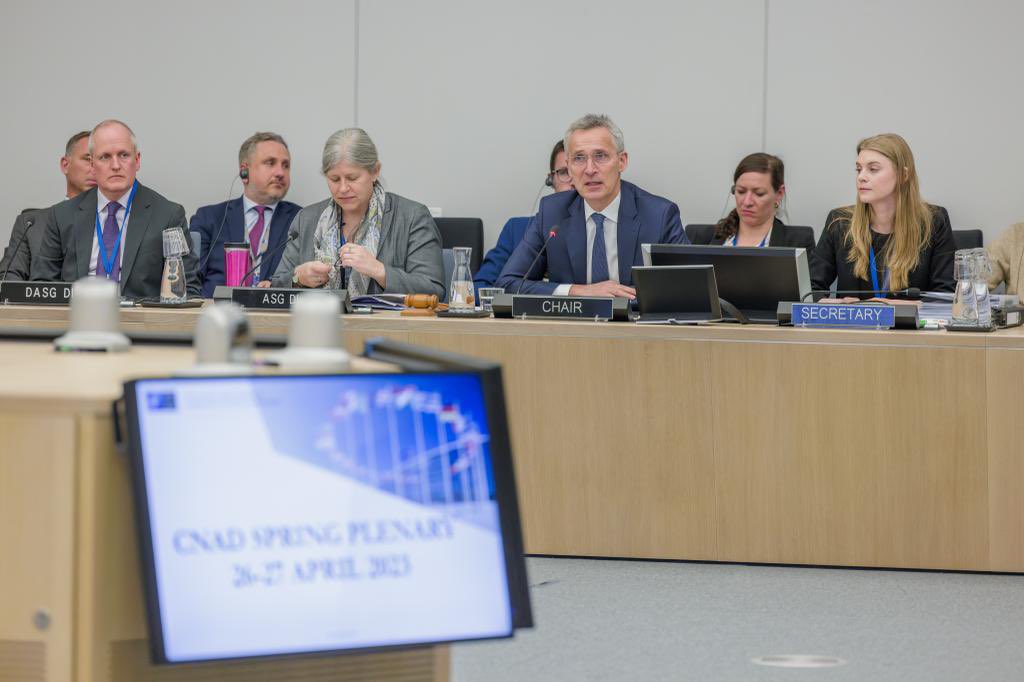Ukraine War
Defence Contractors Raise Ammunition Prices Affecting NATO and Ukraine

On Saturday, a top NATO military official warned that a sharp increase in ammunition prices meant that members’ increased defence spending for Ukraine does not always translate into increased security, and he asked for more private involvement in defence firms.
“The cost of equipment from defence contractors and ammunition is skyrocketing. Right now, we’re paying more and more for the same thing,” said Dutch Admiral Rob Bauer, leader of NATO’s military committee, during a meeting of the alliance’s defence chiefs in Oslo on Saturday.
“This means we can’t be certain that increased defence spending leads to increased security.”
NATO has been pushing for increased defence production to meet a surge in demand for weapons and equipment since Russia’s invasion of Ukraine, as allies rush supplies to Kyiv while also stockpiling their own stockpiles.
The lack of 155mm artillery rounds has been a major source of concern, with Kyiv firing up to 10,000 of these munitions per day.
NATO Secretary-General Jens Stoltenberg warned Kyiv in February that it was using shells considerably quicker than the West could create them.
Bauer advocated for increased private investment in the defence sector in order to increase manufacturing capacity, encouraging pension funds and banks to avoid branding defence investments as unethical.
“Long-term stability must take precedence over short-term profits.” “As we have seen in Ukraine, war is an event that affects the entire society,” he said, adding that such investment was also in the private sector’s strategic interest.
“Forty percent of the (Ukrainian) economy evaporated in the first days of the war, that was private money to a large extent, that money is gone,” he said. Bauer also urged NATO leaders to accelerate the expansion of manufacturing capacity.
According to Bauer, there was no correlation between a lack of ammunition and the laborious development of Ukraine’s counteroffensive.
“It takes time because it is extremely dangerous, because there are an enormous amount of mines in a very deep minefield – more than 10 kilometres – with five, six mines per square metre,” he explained, saying that Ukraine was still moving at a rate of 200 to 300 metres each day.
NATO’s greatest collective defence drills since the Cold War will take place in Germany, Poland, and the three Baltic republics in 2024, with over 40,000 troops from across the alliance expected to participate in the exercise Steadfast Defender.
NATO prepares industry plan to boost arms production
NATO countries have agreed to a new action plan to strengthen the alliance’s industrial base, as governments hurry to replenish their weapon stockpiles while also delivering military supplies to Ukraine.
The Defence Production Action Plan is described in the recent Vilnius, Lithuania, summit communique as a way to leverage NATO’s role as “a convener, standard-setter, requirement setter and aggregator, and delivery enabler to promote sustainable defence industrial capacity.”
The strategy will initially focus on land munitions, according to the statement, and will assist comprehend the inner workings of the alliance’s enormous defence industry, which includes small and medium-sized businesses.
One of the most immediate lessons learned from the Ukraine war, according to Wendy Gilmour, NATO assistant secretary general for defence investment, was that NATO does not have enough ammunition inventories for the country.
“The firing rates… were far beyond anything we had anticipated,” she stated in an exclusive interview with Defence News last month.
According to her, the alliance’s Conference of National Armaments Directors, or CNAD, had a special conference in September to assess the requirement for ground combat equipment and battle-decisive munitions.
The stakeholders agreed that a new sort of industrial basis was required, or, at the very least, a different scope and organisation for the post-Cold War industrial base.
The procurement leaders investigated how the alliance could work together to expand output and assess the level of risk that could be acceptable while drawing from current stocks.
Between the CNAD conference in September 2022 and the NATO defence ministerial in Brussels in February 2023, the armaments community was given a mandate to brainstorm how NATO could address bottlenecks, which is how the Defence Production Action Plan was born, according to Gilmour.
She stated that a public version of the document should be available in the autumn.
































